
Fusion basics
About 78 per cent* of the world’s energy requirements is covered today by fossil energy sources. The reliability of present supplies readily obscures the fact that the climate problem, limited fuel resources, and political instability call in the long run for a new energy system.
The situation is aggravated by the increasing energy requirements in developing countries and the rapidly growing world population. Even though the industrial countries succeed in achieving large-scale saving of energy, requirements will rise world-wide.
The amount of economically efficient energy sources capable of replacing coal, oil, and gas is, however, very limited: Besides nuclear fission and solar energy there is the third possibility of fusion.
Energy and systems studies in the context of the European Fusion Programme are investigating possible developments of the energy system.
* IEA - World Energy Outlook 2024, Page 296

18. Model calculations and systems studies cannot predict the future. But they do clarify contexts.
(photo: IPP, Michael Herdlein)
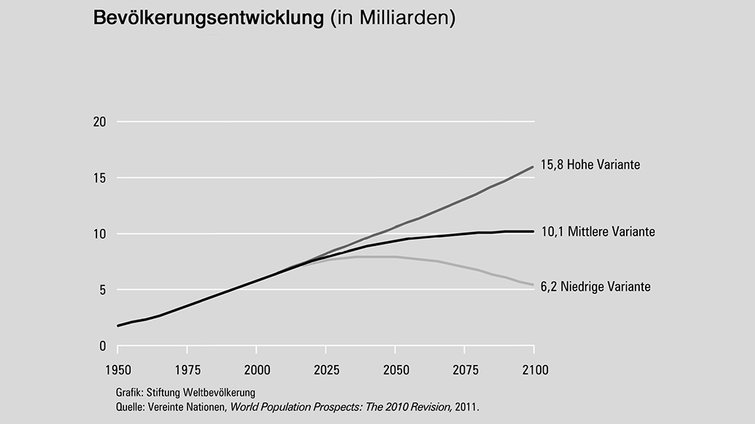
Fusion in the energy mix of the future
1. The world’s population is growing fast, primarily in developing and threshold countries.
(Graphic: Stiftung Weltbevölkerung, Data: United Nations, 2011)
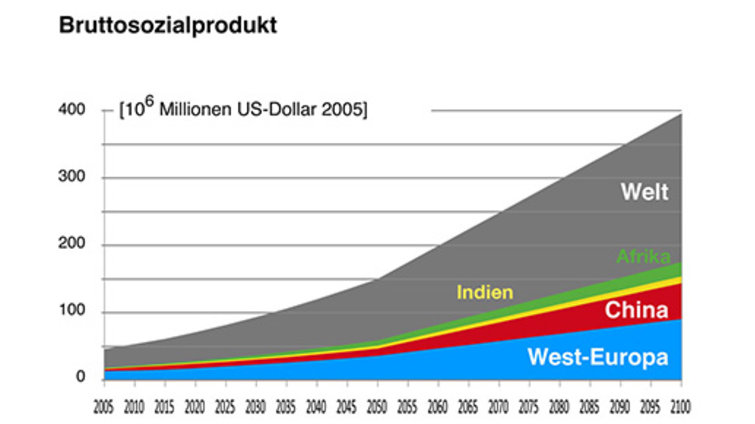
2. The number of people alone will increase consumption and energy requirements. Then there is the rapidly increasing per capita demand in developing countries.
(Data: GTAP-Modell, Martini 2011)
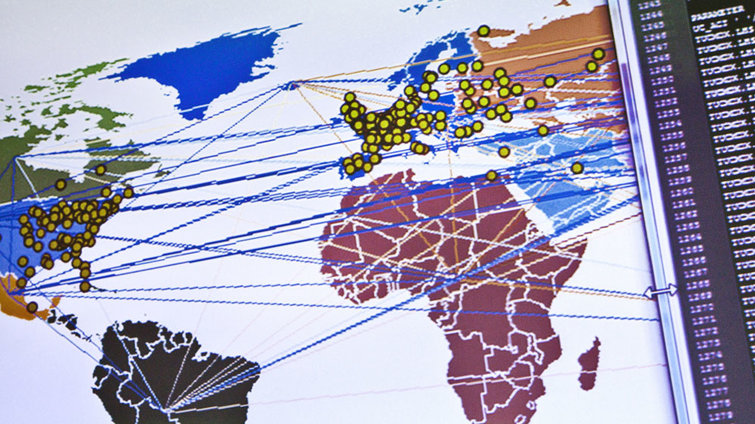
3. The European Fusion Research Programme is using an energy model of the world to determine the driving forces of development, the potentials of the energy technologies and the complex system relations.
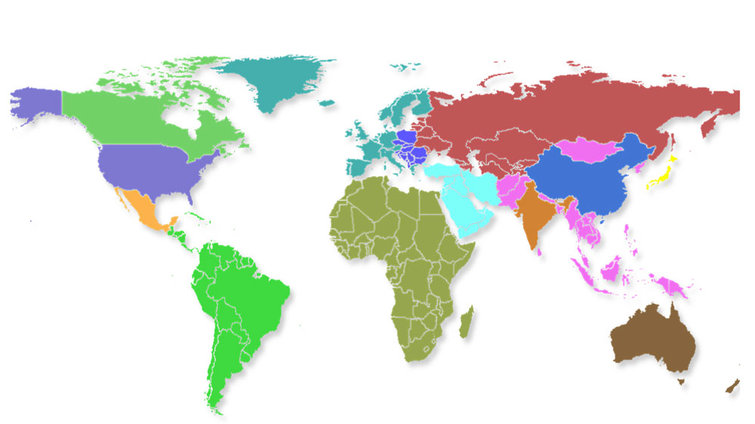
4. The EFDA-TIMES energy system model (status as of 2011) describes for all regions of the world the total process chain from resources to the consumer.
(Graphic: IPP, Tobias Eder)
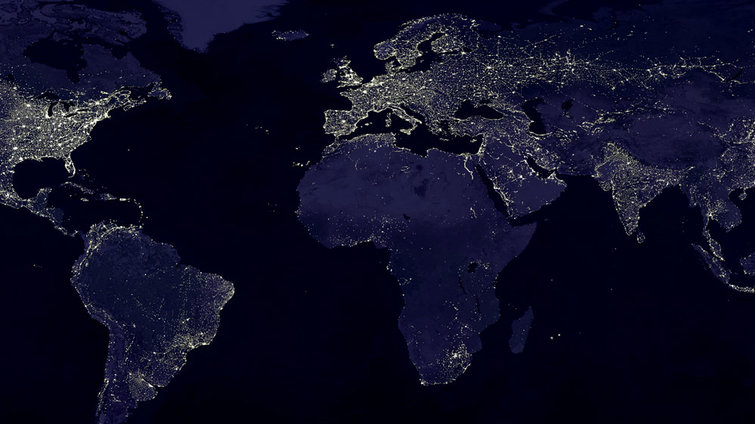
5. To cover energy requirements, the model is looking under given general conditions for the energy mix with the lowest economic costs.
(photo: NASA)

6. The energy technologies with their properties, costs and expected efficiency increases specified by the respective experts are incorporated in the model.
(Photo: IPP, Michael Herdlein)
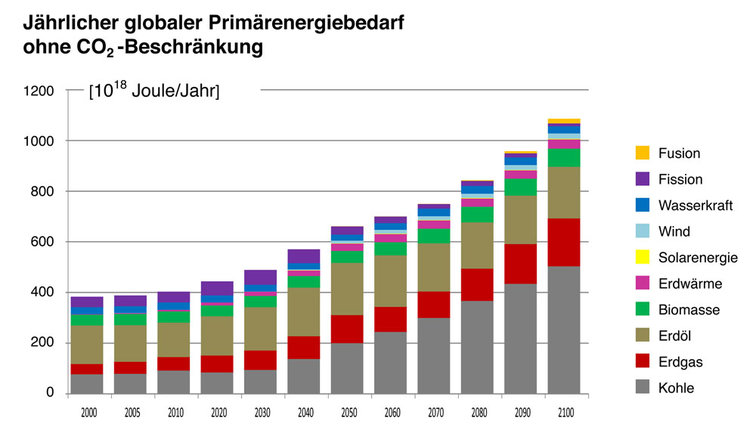
7. A purely cost-optimised scenario: Without climate being taken into account, the world’s energy requirements are covered 80 % by fossil energy sources.
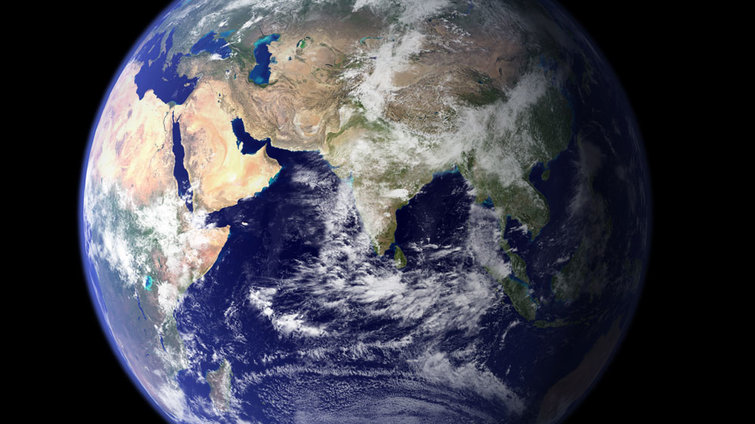
8. Even a modest climate protection scenario, viz. 550 millionths of carbon dioxide in the atmosphere to limit earth warming to three degrees, would thus fail.
(photo: NASA)
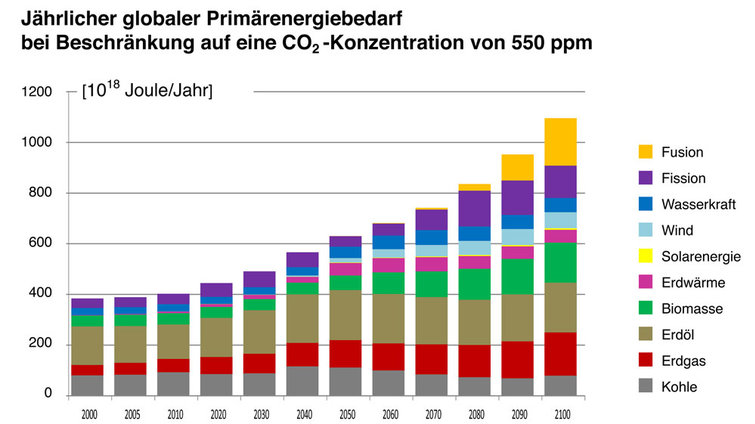
9. Only international limitation of carbon dioxide will bring more expensive, but climatically beneficial technologies into play.

10. In the field of power production it is the same picture: Purely cost-optimised, coal will be the favourite of the century throughout the world …
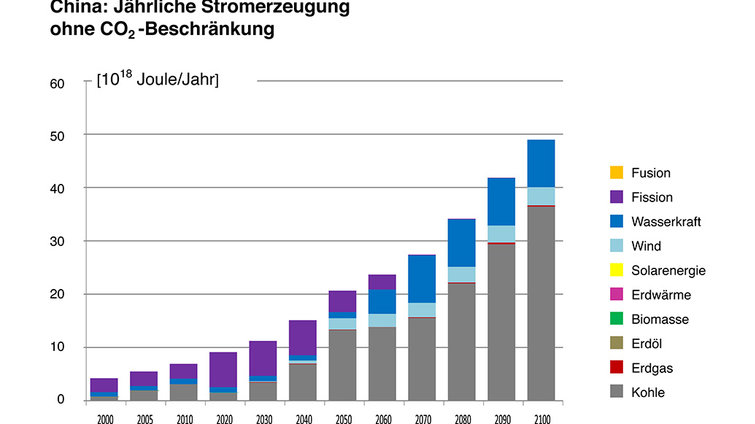
11. … and primarily in up-and-coming economies such as China. Fusion and renewable energies hardly count.
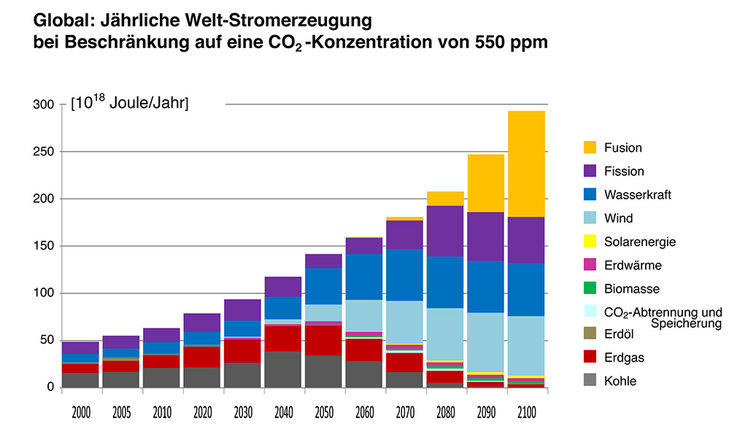
12. Reliable carbon dioxidelimitation would radically change the scene: In the wake of natural gas and nuclear fission, as of 2050, renewables and fusion will be increasingly prominent.
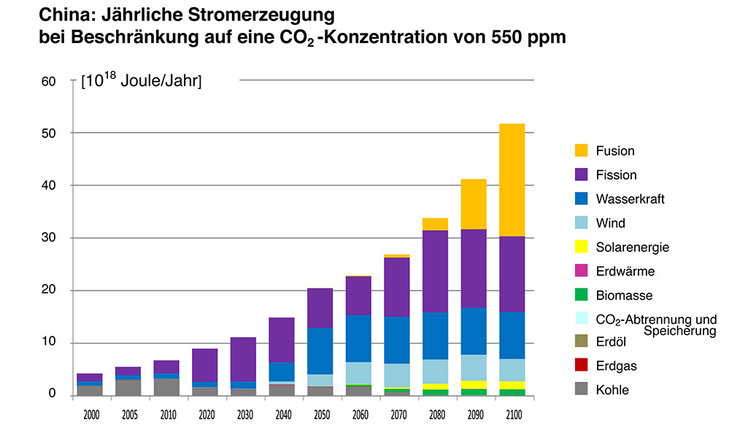
13. Especially for China, the most cost-favourable option would then be a mix of nuclear fission, wind and hydropower and, whenever available, fusion.

14. Scenario for Western Europe: The original favourites, coal, natural gas and fission, will be succeeded at the end of the century by wind, hydropower and fusion.

15. What if fusion research fails? To achieve the three-degree target, half wind and waterpower, half nuclear fission will cover power requirements in 2100.

17. This would be the most expensive, and hence least probable, development. Power would be about twice as expensive as in the other scenarios.
(photo: ENBW)

18. Model calculations and systems studies cannot predict the future. But they do clarify contexts.
(photo: IPP, Michael Herdlein)

Fusion in the energy mix of the future
1. The world’s population is growing fast, primarily in developing and threshold countries.
(Graphic: Stiftung Weltbevölkerung, Data: United Nations, 2011)

2. The number of people alone will increase consumption and energy requirements. Then there is the rapidly increasing per capita demand in developing countries.
(Data: GTAP-Modell, Martini 2011)

3. The European Fusion Research Programme is using an energy model of the world to determine the driving forces of development, the potentials of the energy technologies and the complex system relations.

4. The EFDA-TIMES energy system model (status as of 2011) describes for all regions of the world the total process chain from resources to the consumer.
(Graphic: IPP, Tobias Eder)

5. To cover energy requirements, the model is looking under given general conditions for the energy mix with the lowest economic costs.
(photo: NASA)

6. The energy technologies with their properties, costs and expected efficiency increases specified by the respective experts are incorporated in the model.
(Photo: IPP, Michael Herdlein)

7. A purely cost-optimised scenario: Without climate being taken into account, the world’s energy requirements are covered 80 % by fossil energy sources.

8. Even a modest climate protection scenario, viz. 550 millionths of carbon dioxide in the atmosphere to limit earth warming to three degrees, would thus fail.
(photo: NASA)

9. Only international limitation of carbon dioxide will bring more expensive, but climatically beneficial technologies into play.

10. In the field of power production it is the same picture: Purely cost-optimised, coal will be the favourite of the century throughout the world …

11. … and primarily in up-and-coming economies such as China. Fusion and renewable energies hardly count.

12. Reliable carbon dioxidelimitation would radically change the scene: In the wake of natural gas and nuclear fission, as of 2050, renewables and fusion will be increasingly prominent.

13. Especially for China, the most cost-favourable option would then be a mix of nuclear fission, wind and hydropower and, whenever available, fusion.

14. Scenario for Western Europe: The original favourites, coal, natural gas and fission, will be succeeded at the end of the century by wind, hydropower and fusion.

15. What if fusion research fails? To achieve the three-degree target, half wind and waterpower, half nuclear fission will cover power requirements in 2100.

17. This would be the most expensive, and hence least probable, development. Power would be about twice as expensive as in the other scenarios.
(photo: ENBW)

18. Model calculations and systems studies cannot predict the future. But they do clarify contexts.
(photo: IPP, Michael Herdlein)